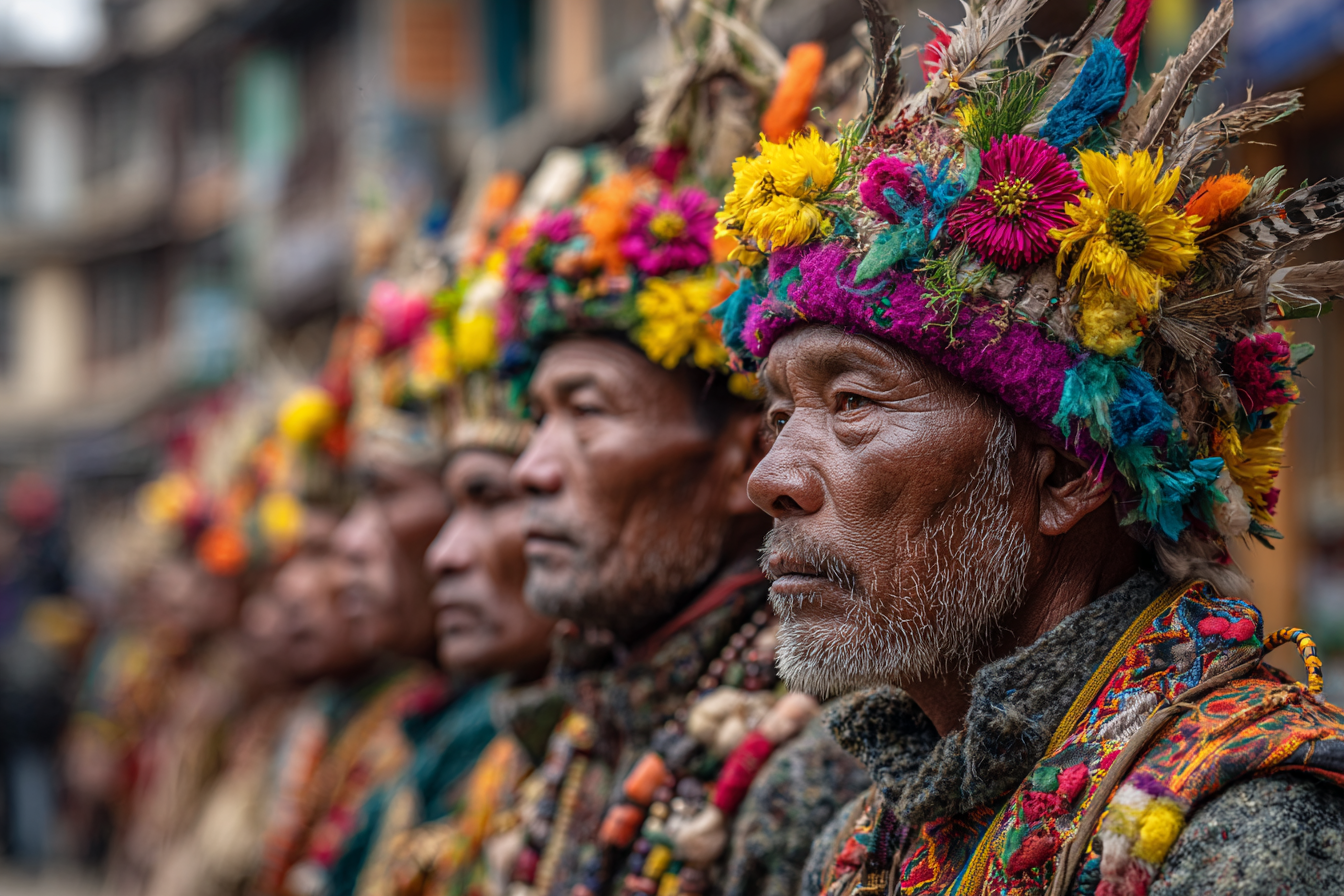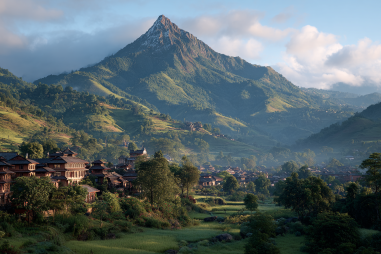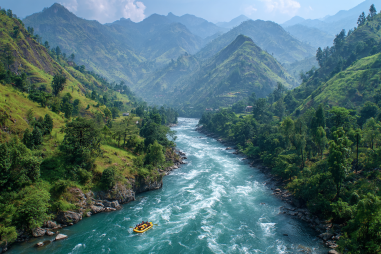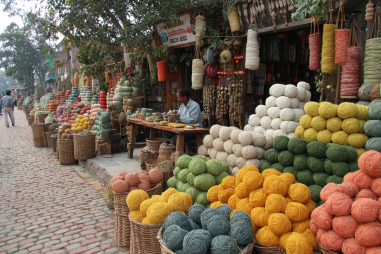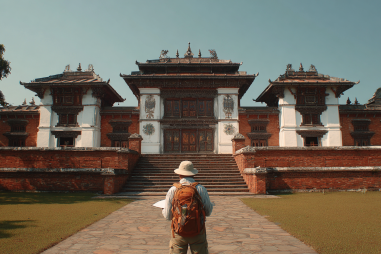Namche Bazaar, perched high in the Himalayas, is much more than a gateway to some of the world’s most famous trekking routes—it is a vibrant hub where Sherpa culture and traditions are deeply alive. Nestled in the heart of Nepal’s Everest region, this bustling town has preserved its rich heritage while embracing the modernity brought by tourism. Exploring Namche Bazaar offers a unique opportunity to immerse yourself in the daily lives, festivals, culinary arts, and spiritual practices that define the Sherpa community. Let’s embark on a journey through the sights, sounds, and stories that make Namche Bazaar truly special.
Sherpa Heritage in Namche Bazaar
The Sherpa people are renowned for their resilience and profound connection to the mountains. Their roots in the region date back several centuries, originating from Tibet, and settling in the Khumbu Valley. Namche Bazaar serves as the central trading post and cultural heart of the Sherpa homeland. Here, traditions passed down through generations are woven into everyday life—whether it’s through language, dress, or community gatherings.
Unlike some remote mountain villages, Namche’s role as a commercial and cultural crossroads means Sherpa heritage is visible in vibrant marketplaces, bustling with artisans, traders, and locals clad in traditional Tibetan-style dress. The Sherpa’s reputation as skilled mountaineers and guides also adds to their unique identity, making Namche a living symbol of their enduring spirit and adaptability.
Traditional Festivals and Ceremonies
Namche Bazaar’s cultural calendar is adorned with colorful festivals that provide insight into the spiritual and social lives of the Sherpa community. One of the most significant is “Dugla,” which celebrates the Tibetan New Year and coincides with rituals aiming to bring good fortune, health, and peace to the community. During this time, locals engage in prayer ceremonies, traditional dancing, and vibrant music performances.
Another important festival is “Lhosar,” a time to honor ancestors and seek blessings. The festivities typically feature masked dances performed by monks, known as “cham” dances, which narrate stories of Buddhist mythology and protector deities. Visitors lucky enough to witness these events gain a profound appreciation for the deep spirituality that animates Sherpa culture and the strong communal bonds upheld through these rituals.
Daily Life and Customs of Namche Residents
Walking through the streets of Namche Bazaar, you quickly notice how daily routines are steeped in age-old customs. Sherpas live in distinct stone and wood houses built with timber from the local forests, and their lifestyles still revolve around subsistence farming, animal husbandry, and trade. Yak herding is especially vital, as yaks provide transportation, milk, wool, and meat essential for survival at high altitudes.
Families in Namche highly value hospitality and community support. Guests are warmly welcomed into homes, often offered butter tea, a traditional beverage made with tea leaves, yak butter, salt, and sometimes a touch of milk. The Sherpa language, rich in history, is commonly spoken alongside Nepali and English, reflecting Namche’s role as both a traditional village and a tourist destination.
Local Cuisine and Culinary Traditions
Food in Namche Bazaar mirrors its rugged environment and cultural heritage. Staples like barley, potatoes, and maize form the foundation of many meals. The famous “Tsampa,” a roasted barley flour mixed with butter tea or water, is a typical Sherpa energy food, consumed both daily and during festivals.
Another local delight is “Momo,” Tibetan-style dumplings filled with meat or vegetables, which can be found in many teahouses and eateries. Sherpa cuisine also includes hearty soups like “Thukpa,” a noodle soup perfect for the chilly mountain climate. Meals often come with side dishes of pickled vegetables, lentils, and fresh greens sourced from nearby fields or mountain gardens.
Handicrafts and Local Art
The arts and crafts handmade by Namche Bazaar’s locals play an important role in preserving Sherpa traditions and livelihood. Intricate weaving, embroidery, and woodcarving are passed down through generations, producing beautiful textiles, prayer flags, and religious artifacts.
Shops and stalls feature vibrant handwoven wool garments, yak wool scarves, and colorful beadwork. These crafts often carry symbolic meanings connected to Buddhism and the natural environment. Purchasing handicrafts not only allows tourists to take home a piece of Sherpa culture but also supports the local economy and helps maintain these traditional skills.
Religious Beliefs and Monasteries
Religion is a cornerstone of Sherpa life, with Tibetan Buddhism deeply influencing customs, values, and governance. Several monasteries and stupas around Namche serve as spiritual centers where locals perform rituals, seek blessings, and meditate.
The Namche Gompa monastery is a focal point for religious activities. It houses ancient thangka paintings and statues of Buddhist deities, and hosts regular prayer sessions that invite community participation. These religious spaces also provide an introduction to Sherpa cosmology and the importance of living in harmony with nature.
How Tourists Can Respectfully Engage with Culture
Visitors to Namche Bazaar eager to engage with Sherpa culture should do so with mindfulness and respect. Here are some friendly guidelines to ensure a positive experience that honors local traditions:
- Ask permission before photographing people, especially during religious events.
- Dress modestly and avoid wearing flashy or revealing clothing in villages and monasteries.
- Learn a few basic Sherpa or Nepali phrases to show appreciation for the local language.
- Support local businesses by purchasing handmade crafts and eating at local restaurants.
- Respect the customs observed during festivals and ceremonies, observing quietly and participating only when invited.
- Dispose of waste responsibly and help preserve the pristine mountain environment.
Engaging in this way allows travelers to form meaningful connections and gain a deeper understanding of Sherpa life beyond the tourist trail.
Embracing the Living Traditions of Namche Bazaar
Namche Bazaar is truly a place where history, culture, and spirituality converge amidst the grandeur of the Himalayas. By exploring its festivals, customs, cuisine, arts, and religious practices, visitors are invited on a rich cultural journey that goes far beyond breathtaking landscapes. The warmth and resilience of the Sherpa people shine through every aspect of life here, making Namche a living museum of traditions that continue to thrive.
Whether you’re sipping butter tea in a family home, watching monks perform sacred dances, or admiring handwoven textiles, Namche Bazaar offers an inspiring glimpse into a culture defined by courage, faith, and community. By stepping respectfully into this world, travelers contribute to preserving and celebrating the remarkable heritage that makes Namche a unique jewel in the Himalayas.

